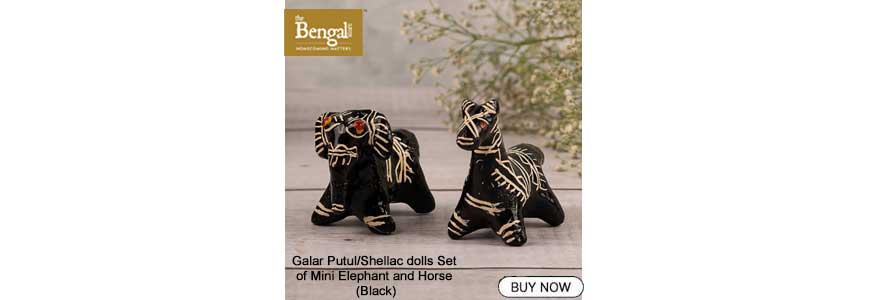UK-based women’s group set for a Saree Walkathon on National Handloom Day – GetBengal story
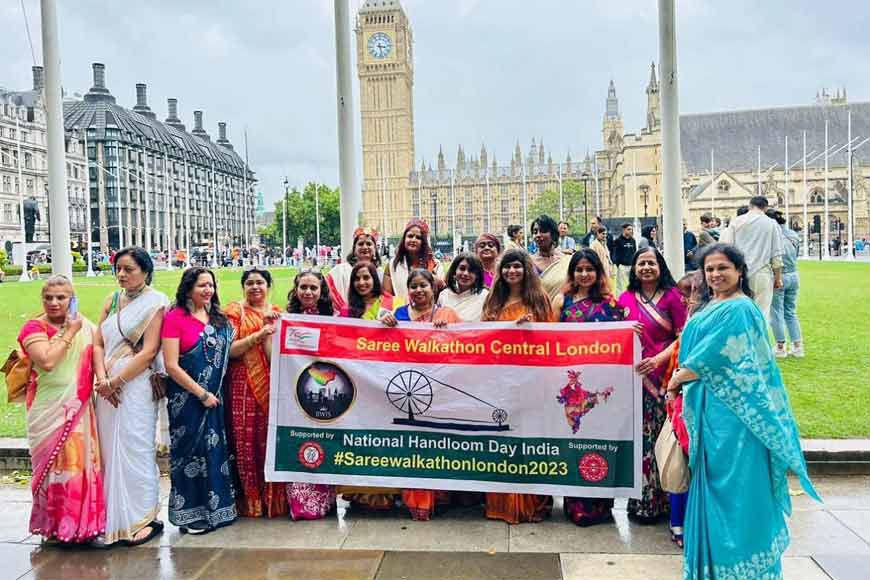
London Saree Walkathon, 2023, organized by ‘British Women in Sarees’ on National Handloom Day
Former Viceroy of India, Lord Curzon, announced the Partition of Bengal on 19 July 1905 which resulted in fierce opposition from the nationalists. The Swadeshi Movement was launched on August 7th, 1905 and it encouraged indigenous industries and in particular, handloom weavers. Handloom weaving is an age-old tradition in India. Our culture has been practicing it for ages, long before the textile mills were introduced. In 2015, the Government of India decided to highlight the country’s ancient heritage and raise awareness about handloom and declared August 7 as National Handloom Day.
This year, in an unprecedented celebration of Indian weaves, a prominent UK-based women's organization is gearing up for an extraordinary event – a Saree Walkathon – set to take place on the eve of India's National Handloom Day. Scheduled for August 6, the walkathon will see around 500 non-resident Indian (NRI) women from diverse Indian states, draped in resplendent and colorful handloom sarees, strolling through the heart of central London. The route will lead from Trafalgar Square to the illustrious Parliament Square in Westminster London via 10 Downing Street. The event is organized by the British Women In Sarees group in collaboration with Inspiring Indian Women (IIW) and aims to promote Indian handloom sarees and raise awareness of the artistic craftsmanship and labor invested in each masterpiece.
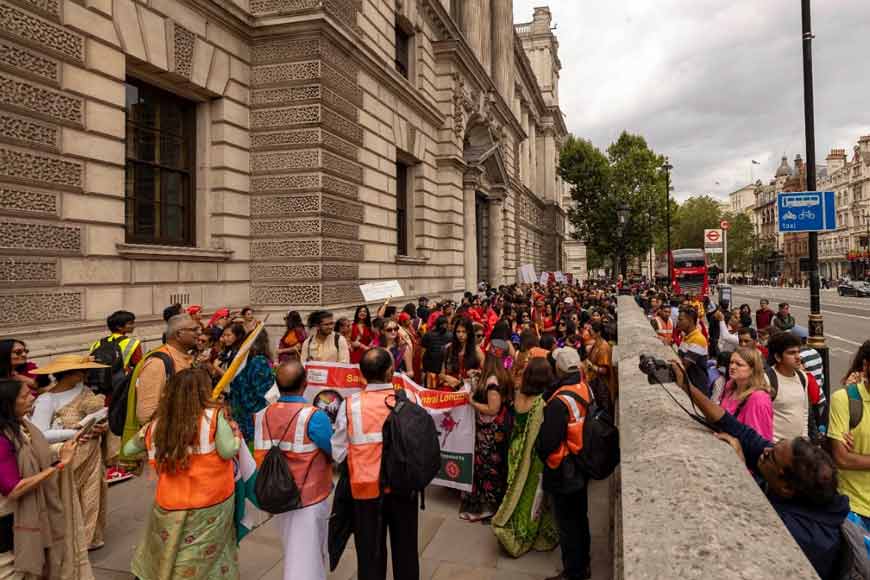
Among the women participating in the walkathon, 60 are representing West Bengal. Paushali De Roy, media coordinator of the 'British Women in Sarees' group says, "We aim to represent Bengal and Bengali culture to the world. We have always seen our mothers and grandmothers drape Dhaniakhali, Begampuri, Shantipuri, and Phulia sarees created by expert weavers in Bengal and inextricably linked to Bengali culture. We will walk on the road draping these traditional handloom sarees and display the artistic brilliance of our weaver community.”
The history of the saree is ancient and can be traced as far back as the Indus Valley civilization. Over the millennia, the saree culture has evolved into a phenomenal art form with myriads of regional variations in fabric, stitches, designs, prints, embroideries, embellishments and styles of draping. The master artisans have weaved through centuries, exhibiting their flawless artistry and upholding the rich cultural heritage of the country. Therefore, a saree is an emblem of our pride, a symbol of our artistic versatility, and an insignia of our brilliant culture.
The faint sound of the loom going ‘rap trap rap’ and you know a deft artisan sitting behind the loom working intently. You might be surprised to note that these sights and sounds are the same across any weaving community in India. Can you imagine that each of these communities in different geographical locations across the country produces a unique weave? Be it the famous Muslin, Dhakai, Baluchari, Taant, Bishnupuri and Murshidabad silk of Bengal, Kanchipuram silk, Sungadi, Rasipuram, Thribhuvanam from Tamil Nadu, Mangalgiri, Ikat from Andhra Pradesh, sambalpuri from Odisha, Chanderi from Madhya Pradesh, Banares weaves of Varanasi, Paithanis of Maharashtra to the precious Patan Patola from Gujarat. Not to mention the unique nature of tribal weaves and silks from the North Eastern States such as Assam, Manipur and Meghalaya.
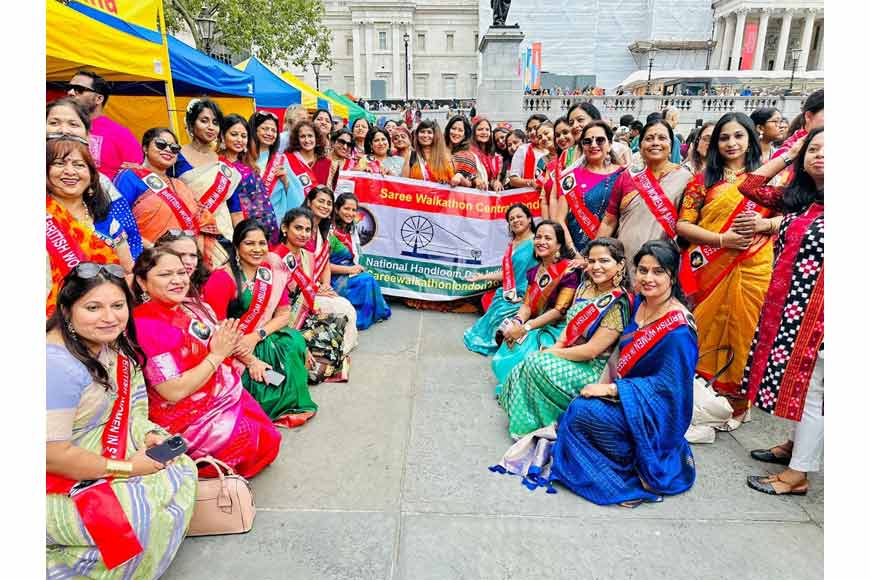 Handloom weaving, a symbol of the rich and extensive cultural heritage of India
Handloom weaving, a symbol of the rich and extensive cultural heritage of India
The British Women in Sarees group, which is hosting the event, believes that the contemporary Indian woman traverses the world beyond her cocoon and she does all that and more, in a saree while redefining the codes of power dressing. This group of empowered women takes pride in flaunting handloom sarees and representing the unique cultural melting pot that is India. A non-profit organization, it hosts events from time to time to promote the country’s national heritage and sensitize the global audience about the toil, handwork and artistry, which goes behind weaving each of these masterpieces.
Dr. Dipti Jain is the brain behind the group that initiated the move last year to draw attention to the plight of Indian weavers, especially in the aftermath of the COVID outbreak. She had organized the very first event at the Ladies Day Royal Ascot Races on June 16, 2022 in Berkshire, where more than 1000 women from the Indian subcontinent turned up in sarees. This is an event where the upper echelons of society follow the tightest Dress Code, with males wearing grey, navy, or black morning dress and a top hat, and women wearing formal daywear and a hat.
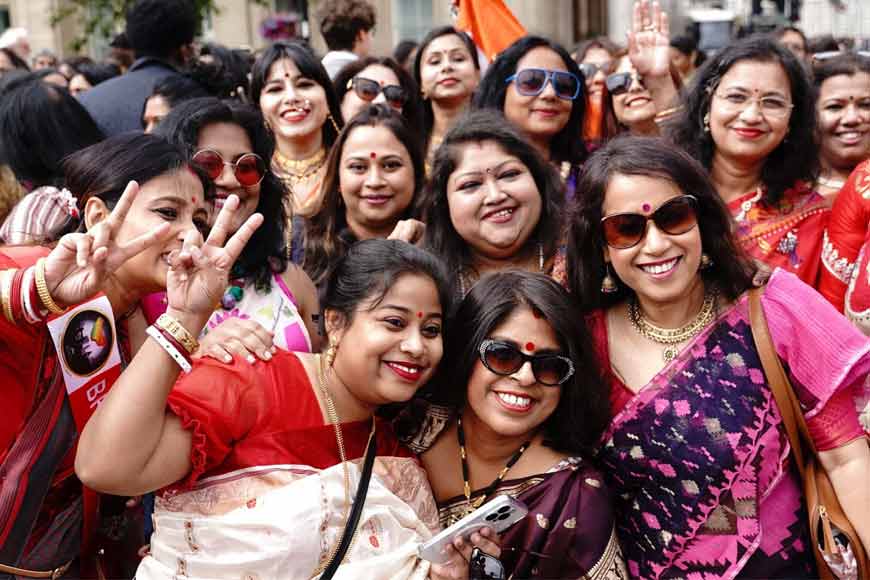 60 women representing West Bengal in the London Saree Walkathon, 2023
60 women representing West Bengal in the London Saree Walkathon, 2023
At an event of this magnitude that sees the best of fashion, over 1,000 women made history when they turned up in sarees for Royal Ascot’s Ladies Day. The saree-clad women, many of Indian origin, displayed India's culture on a worldwide fashion platform. The diversity of Indian states was on full display. The world watched them but the limelight that their sarees fetched provided them the platform to raise awareness about the plight of artisans and weavers who need support to continue and pass on their craft to the next generation. The proceeds from the event were given to a community of weavers in Nanur, in Birbhum district, West Bengal.
The group has ambitious plans for the future and intends to reach out, grow and connect with more artisans and weavers who need support. This way they will chip in to preserve ancient handicrafts.
Image Courtesy : Prabhat Khabar








